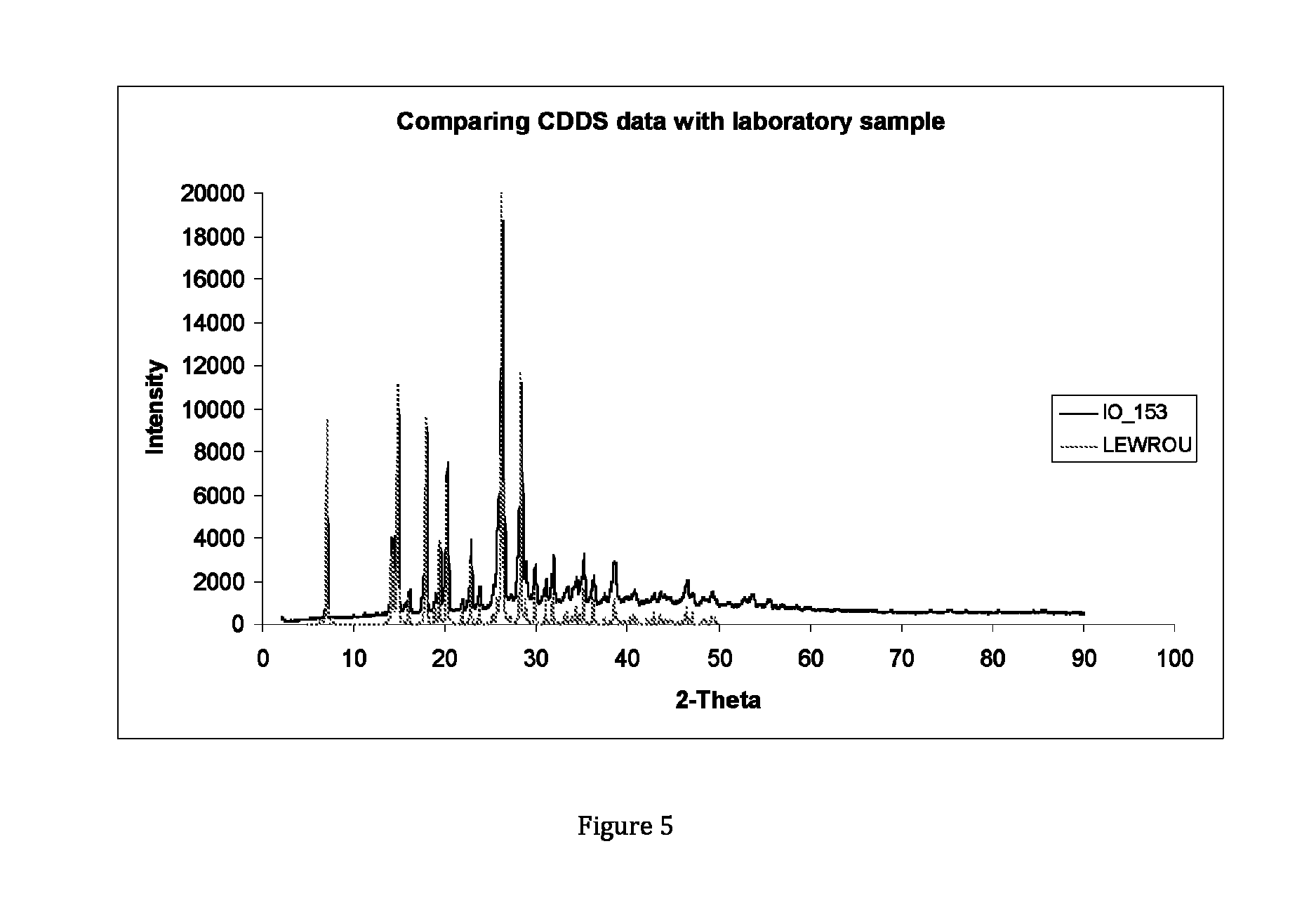Methods for making active crystalline materials
a technology of active crystalline materials and crystalline materials, which is applied in the direction of biocide, carboxylic compound separation/purification, plant growth regulators, etc., can solve the problem that the anti-solvent may be less capable of intermolecular interactions with the precursor components and the active crystalline material than the solven
- Summary
- Abstract
- Description
- Claims
- Application Information
AI Technical Summary
Benefits of technology
Problems solved by technology
Method used
Image
Examples
example 1
Cocrystallisation of Caffeine and Oxalic Acid
[0075]An anti-solvent (33.4 g / 97.8 wt % of anhydrous cyclohexane) and a solvent (0.75 g / 2.2 wt % of anhydrous methanol) were poured into the mixer (an oscillatory baffle reactor) to form a liquid medium for cocrystallisation of the precursor components of the active cocrystalline material. The motion generator was operated to provide an oscillatory motion to the liquid medium (stroke amplitude=12.5 mm; frequency 1.5 Hz) and an active precursor component and a cocrystal coformer precursor component (2.05 g caffeine and 0.51 g oxalic acid (stoichiometric ratio 2:1), respectively) were then introduced into the mixer. The reaction took place at ambient temperature and pressure, which were not specifically measured during the reaction but for the laboratory concerned were typically in the ranges 17-22° C. and 96.6-104.28 kPa. After 30 minutes, the motion generator was stopped and the slurry of the liquid medium, active cocrystalline material a...
example 2
Cocrystallisation of Carbamazepine and Nicotinamide
[0076]An anti-solvent (33.4 g / 97.5 wt % of anhydrous cyclohexane) and a solvent (0.75 g / 2.5 wt % of anhydrous methanol) were poured into the flow mixer to form a liquid medium for cocrystallisation of the precursor components of the active cocrystalline material. The motion generator was operated to provide an oscillatory motion to the liquid medium (stroke amplitude=10 mm; frequency 1.5 Hz) and an active precursor component and a cocrystal coformer precursor component (8.31 g carbamazepine and 4.3 g nicotinamide (stoichiometric ratio 1:1), respectively) were then introduced into the flow mixer. The reaction took place at ambient temperature and pressure as described in Example 1. After 3 hours, the motion generator was stopped and the slurry of the liquid medium, active cocrystalline material and residual precursor components were removed from the flow mixer and were subjected to a filtration process. Any remaining solvent was allo...
example 3
Cocrystallisation of Caffeine and Oxalic Acid
[0077]An anti-solvent (33.4 g / 96.1 wt % of hexane) and a solvent (1.34 g / 3.9 wt % of anhydrous methanol) were poured into the mixer (round bottom flask provided with a PTFE paddle stirrer with over-head motor (at 180 rev / min)) to form a liquid medium for cocrystallisation of the precursor components of the active cocrystalline material. The paddle mixer was operated to stir the liquid medium and an active precursor component and a cocrystal coformer precursor component (2.05 g caffeine and 0.51 g oxalic acid (stoichiometric ratio 2:1, respectively) were then introduced into the mixer. The reaction took place at ambient temperature and pressure as described in Example 1. After 30 minutes, the paddle stirrer was stopped and the slurry of the liquid medium, active cocrystalline material and residual precursor components were removed from the round bottom flask and were subjected to a filtration process. Any remaining solvent was allowed to e...
PUM
| Property | Measurement | Unit |
|---|---|---|
| Reynolds Number | aaaaa | aaaaa |
| Reynolds Number | aaaaa | aaaaa |
| temperatures | aaaaa | aaaaa |
Abstract
Description
Claims
Application Information
 Login to View More
Login to View More - R&D
- Intellectual Property
- Life Sciences
- Materials
- Tech Scout
- Unparalleled Data Quality
- Higher Quality Content
- 60% Fewer Hallucinations
Browse by: Latest US Patents, China's latest patents, Technical Efficacy Thesaurus, Application Domain, Technology Topic, Popular Technical Reports.
© 2025 PatSnap. All rights reserved.Legal|Privacy policy|Modern Slavery Act Transparency Statement|Sitemap|About US| Contact US: help@patsnap.com



